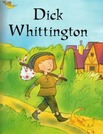
This lesson demonstrates how to compare whole numbers. [Developmental Math playlist: Lesson 7 of 196]
- Subject:
- Math
- Material Type:
- Activity/Lab
- Provider:
- Khan Academy
- Provider Set:
- Khan Academy
- Author:
- Salman Khan
- Date Added:
- 02/20/2011

This lesson demonstrates how to compare whole numbers. [Developmental Math playlist: Lesson 7 of 196]

Here are the supports needed for the DRA from Shari Martin of Sun West Division. The following are included:Correlation Table of Diagnostic Leveled Reading Assessments in Use in SaskatchewanFinding the Reading Level using DRADRA Quick Guide HandbookEligible Students for the OutcomeDRA Recording Tool from Sun West DivisionGrades 1 to 5

Readings and resources to help adult learners.

What is social deviance? Who defines what is deviant and how to people come to behave that way? Today we’re going to explore biological and psychological approaches to explaining deviance, including what each perspective can bring to the table, and their inherent limitations. From there, we’ll explain the sociological perspective and the social foundations of deviance.

This 2011 report provides the most recent diabetes statistics in Canada. It presents rates of the disease (type 1 and type 2 combined) by age group, sex, province and over time, its consequences on the health of affected individuals, and health care utilisation related with diabetes. The report offers statistics on risk factors for developing diabetes and its complications, including obesity/overweight, unhealthy diet, physical inactivity, and smoking. Information on diabetes among children and youth and Aboriginal populations is also presented.

A web page and interactive applet show how to compute the length of the diagonals of a rectangle. A rectangle is shown that can be resized by dragging its vertices. As you drag, the diagonals are continuously recalculated. Text on the page explains calculation. For those who prefer it, in a formula that is given. Applet can be enlarged to full screen size for use with a classroom projector. This resource is a component of the Math Open Reference interactive geometry reference book project at http://www.mathopenref.com.

A web page and interactive applet show how to compute the length of the diagonals of a square. A square is shown that can be resized by dragging its vertices. As you drag, the diagonals are continuously recalculated. Text on the page explains calculation. For those who prefer it, in a formula that is given. Applet can be enlarged to full screen size for use with a classroom projector. This resource is a component of the Math Open Reference interactive geometry reference book project at http://www.mathopenref.com.

Students compare the traits fact and fiction by using a Venn diagram to compare fiction and nonfiction books about Native Americans.

Dialog is a good translation app that offers both voice and text translations. Dialog includes a number of interesting features such as a keyboard with built-in translator, use camera to translate texts in pictures, access translations in offline mode, support for 100 languages, automatic language detection, and more.
Compatibility: iPhone/iPad / Price: Free, offers in-app purchases / Age: 4+

This online tool enables students to learn about and write diamante poems.

An interactive applet and associated web page that demonstrate the diameter of a circle. The applet shows a circle and a diameter line, the ends of which can be dragged to show that the diameter passes through the center and has a constant length regardless of where on the circle it is drawn. The web page has the circle-related formulae. Applet can be enlarged to full screen size for use with a classroom projector. This resource is a component of the Math Open Reference Interactive Geometry textbook project at http://www.mathopenref.com.

Diane Nash was a college student when she started leading sit-in demonstrations to protest discrimination. In this interview, recorded for Eyes on the Prize, Nash describes her role in the Civil Rights movement.

This task supports students in correctly writing numbers. Because students have to trace the number, instead of coloring in a bubble with the number in it or circling the correct number, they gain handwriting practice as well as counting and addition practice.

16 games using dice or cards to build math fact fluency.

Mrs. Crowell takes her 2nd and 3rd graders on a nature walk where they use a dichotomous key to identify different species they encounter. This lesson shows a simple way to take students out on a walk and teach them how to identify species, no matter where they are.

Several links for different drawing/art projects are included in this resource.

This is the Listening Guide for the October 14th, 2020 Read Aloud of "Dick Whittington," a story from England.

' Listen to the audio file... The first reading will be at normal conversational speed; the second reading will be slower so that you may properly [record] the sentence.
'Record your dictation in the text field...
'When you are finished, click the button at the bottom of the page to submit your finished text for automatic evaluation.
'The evaluation will check and correct your text, if needed.'
*The reading speed can be adjusted on all parts of the site where oral readings are available (mostly the Listening and Dictation exercises).*
/
« Ecoutez le document audio. L'orateur français effectue une première lecture du texte à une vitesse normale. Il fait ensuite une lecture plus lente, en dictant les mots.
« Ecrivez ce que vous entendez dans le champ de texte...
« Une fois que vous avez terminé, vous pouvez envoyer votre texte...
« Vous obtiendrez immédiatement la correction de votre dictée, vous pourrez ainsi repérer vos erreurs et voir votre note finale. »
*Le débit de lecture peut être réglé pour tous les extraits lus à l'oral (qui se trouvent principalement parmi les exercices d'Écoute et de Dictée).*

Use as a dictonary, to do word of the day with students or a thesaurus. It also has games.

Retrouvez les biographies des personnes intéressantes au Canada!
Quelques exemples sont:
-Jacques Cartier
-Marguerite Bourgeoys
-Emma Lajeunesse
-Louis Cyr
-Sir Wilfrid Laurier